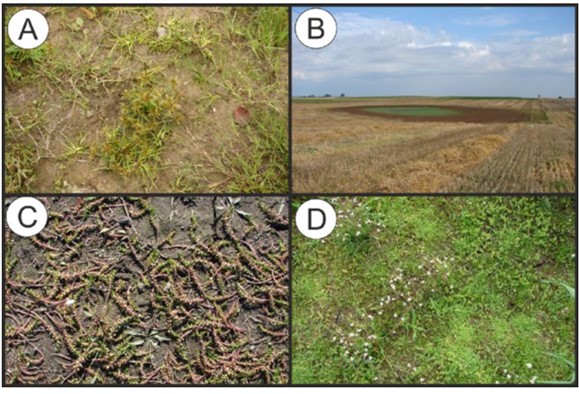Jest to pierwsza formalna klasyfikacja klasy Isoëto-Nanojuncetea w Polsce zainicjowana przez prof. Agnieszkę Popielę z Uniwersytetu Szczecińskiego. Wykorzystano w niej 69562 zdjęć przechowywanych w Polskiej Bazie Roślinności. Na podstawie literatury i wiedzy eksperckiej wyselekcjonowano 63 gatunki diagnostyczne. W pracy zastosowano jednoznaczną klasyfikację według metody Cocktail. Ustalono zestaw definicji formalnych, wykorzystując kombinację operatorów logicznych całkowitego pokrycia gatunkowego w przypadku syntaksonów wyższego rzędu. Przygotowano i zastosowano system ekspercki do klasyfikacji całego zbioru danych i włączono 1340 zdjęć na poziomie klasy. Ostatecznie wykorzystano zestaw 903 zdjęć do przygotowania tabel synoptycznych, map rozmieszczenia i opisów syntaksonów. Zidentyfikowano dwanaście zespołów i dwa zbiorowiska roślinne. Opisano dwa nowe zbiorowiska roślinne w ramach związku Eleocharition i Radiolion.
Abstract: Formalized classification of the class Isoëto-Nanojuncetea has not been performed in Poland. We used 69,562 relevés stored in Polish Vegetation Database. Based on the literature and expert knowledge we selected 63 diagnostic species for the Isoëto-Nanojuncetea class. Unequivocal classification was applied in this work according to Cocktail method. A set of formal definitions was established using a combination of logical operators of total cover of species in case of high-rank syntaxa while sociological species groups and cover of particular species were used for logical formulas describing class, alliances and associations. An Expert System was prepared and applied to classify the whole data set of PVD and 1,340 relevés were organized at the class level. We stratifies the data and finally we used data set of 903 relevés to prepare synoptic tables, distribution maps and descriptions of the syntaxa. Twelve associations and two plant communities were identified. Vegetation of the Isoëto-Nanojuncetea class occur in Poland’s central and southern part, with scattered stands in northern region. We described two new plant communities within Eleocharition and Radiolion alliance. The first formal classification of the Isoëto-Nanojuncetea class revealed a high diversity of ephemeral vegetation wetland found in Poland in the eastern boundary of their geographical distribution in Europe.
Kącki Z., Łysko A., Dajdok Z., Kobierski P., Krawczyk R., Nowak A., Rosadziński S., Popiela A.A. 2021.Formalized classification of ephemeral wetland vegetation (Isoëto-Nanojuncetea class) in Poland (Central Europe). PeerJ 9:e11703 https://doi.org/10.7717/peerj.11703
Figure 1. Vegetation of the Verbenion supinae alliance. (A) Phytocoenosis of the Cyperetum flavescentis. (B) a temporary pool in arable field depressions with patches of the Eleocharito-Schoenoplectetum supini (brown belt). (C and D) Phytocoenoses of the Eleocharito-Schoenoplectetum supini in different stages of development (Photo by R. Krawczyk)
post
post
2021-12-14 09:19:55


